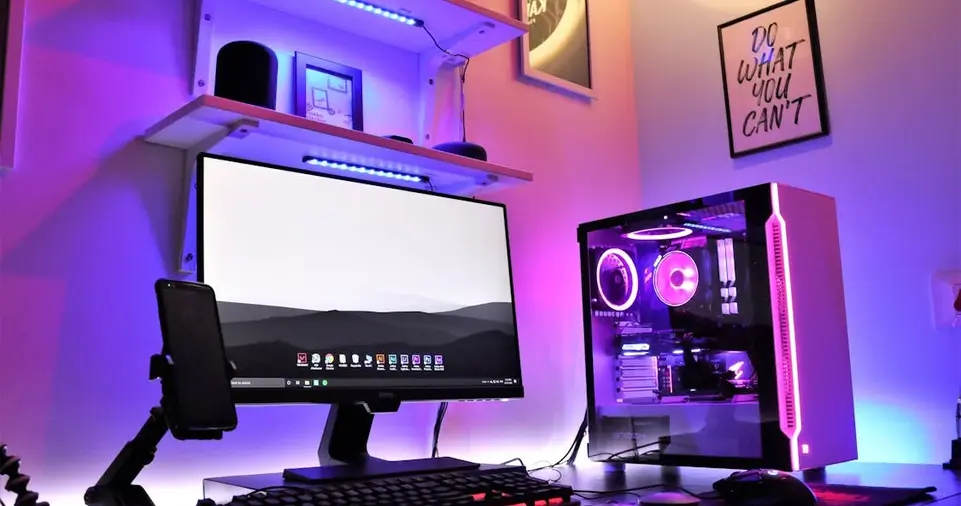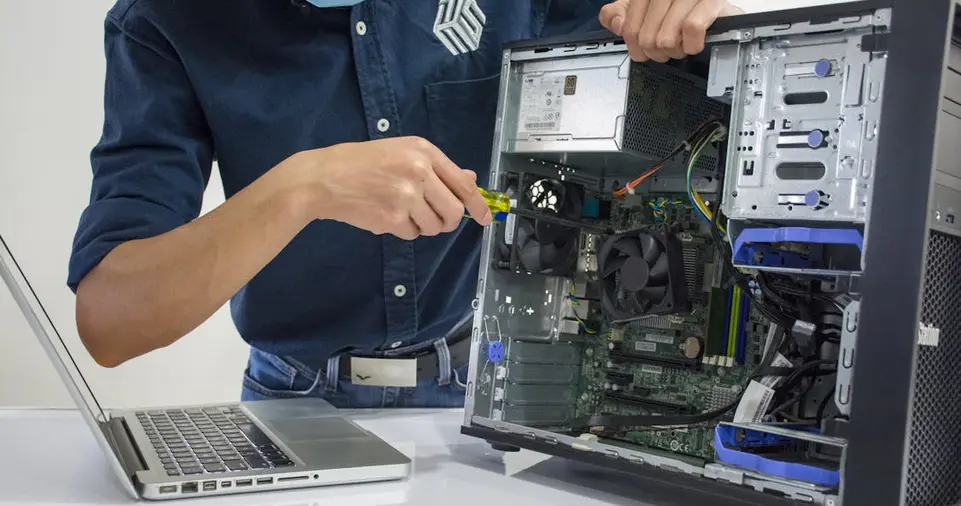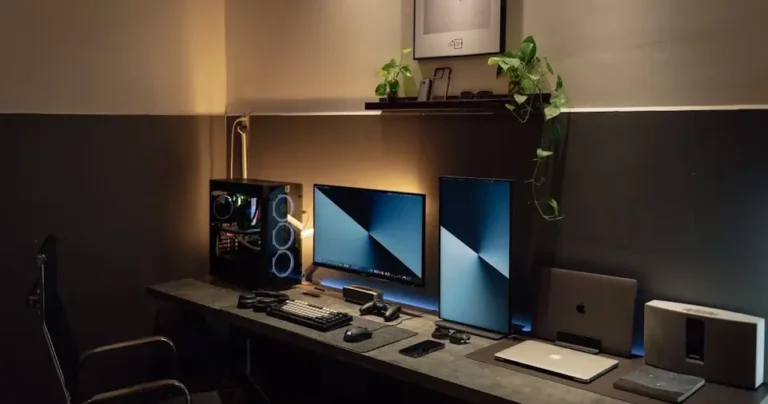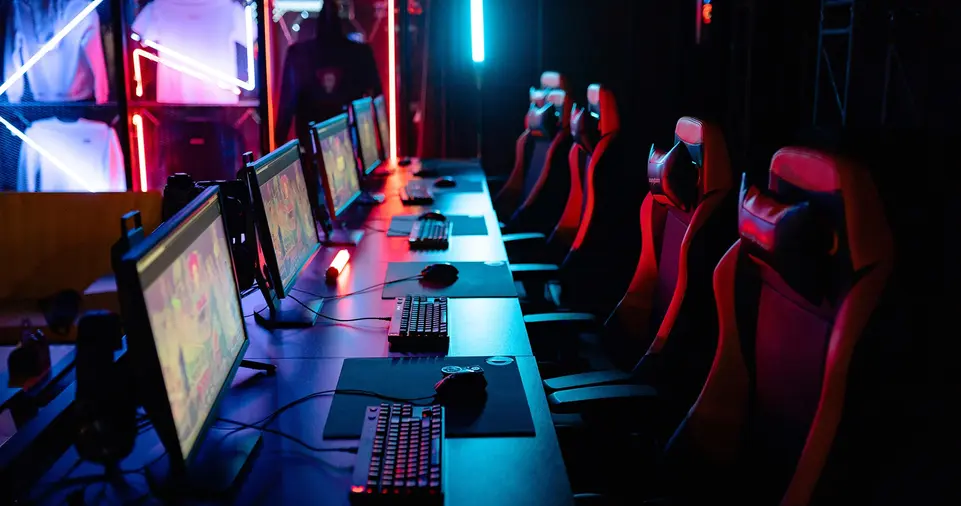Building a gaming PC can be an exciting yet challenging task, especially when trying to stick to a budget.
However, with careful planning, you can create a high-performance machine that allows you to enjoy the latest games without spending a fortune.
In this guide, we’ll explore the essential components you need, and provide tips for making smart choices while keeping costs down.
Choosing the Right Components for Your Budget Build

To build a gaming PC, you need to choose the right components that balance performance and cost.
Let’s break down the key parts and provide some recommendations for budget-friendly options.
Central Processing Unit (CPU)
The CPU is the core of your system, responsible for handling instructions and data.
When building on a budget, it’s crucial to select a processor that provides solid performance for gaming and other tasks.
Recommended Budget CPU
The Intel Core i5-13400F is an excellent choice for budget gamers. With 10 cores and impressive clock speeds, it delivers strong gaming performance and multitasking capabilities. It offers great value for money at around £200.
Alternative Option
For those looking to save even more, the Intel Core i3-13100 is a solid option. While it has fewer cores (4), it still offers decent gaming performance and can handle most modern games at 1080p. This CPU is priced at around £120.
Graphics Processing Unit (GPU)
The GPU is the most important component for gaming performance. For budget builds, it’s essential to find a graphics card that provides good performance at 1080p, without overspending.
Recommended Budget GPU
The RTX 3050 is a great mid-range option that delivers good 1080p performance and ray tracing capabilities.
It’s perfect for gamers who want to experience modern games with good graphical quality without spending a fortune. Expect to pay around £215.
Alternative Option
If you’re on a tighter budget, the GTX 1050 Ti is still a viable option for entry-level gaming.
While it won’t handle the most demanding games at high settings, it’s sufficient for older titles or less demanding games. It costs around £150.
Motherboard
The motherboard connects all your components together and dictates what features and expansion options are available.
When selecting a motherboard, make sure it’s compatible with your chosen CPU and GPU while offering enough slots and ports for your needs.
Recommended Motherboard
This motherboard is well-suited for budget builds, providing good compatibility with Intel’s latest processors.
It includes ample ports, slots for multiple M.2 drives, and solid build quality, all for around £170.
Alternative Option
The Asus TUF Gaming B660 is a slightly more affordable alternative, priced at around £130.
It offers good stability and a solid feature set, though it may lack some of the advanced features found in higher-end boards.
RAM (Memory)
For a gaming PC, having sufficient memory is crucial for smooth performance. Aim for at least 16GB of RAM, which is the sweet spot for modern gaming.
Recommended RAM
Crucial offers reliable and budget-friendly memory kits. A 16GB kit (2x8GB) will provide enough capacity for gaming and multitasking without breaking the bank. This kit is available for around £50.
Alternative Option
If you’re looking to save even more, 8GB of RAM can suffice for most budget builds. However, keep in mind that 16GB is generally the better choice for future-proofing. An 8GB kit costs around £30.
Storage (SSD vs HDD)
For faster load times and improved performance, an SSD is highly recommended over traditional HDDs.
However, you can still include an HDD for additional storage space if needed.
Recommended SSD
The Crucial P3 offers solid read and write speeds, making it an excellent choice for budget-conscious gamers.
A 1TB SSD ensures you have enough storage for your operating system, games, and other applications. Expect to pay around £35.
Alternative Option
If you need more storage space on a tighter budget, consider combining a smaller SSD with a larger HDD.
A 512GB SSD paired with a 1TB HDD can give you the best of both worlds—faster boot times and plenty of storage for games and media. This combination will cost around £50.
Power Supply (PSU)
The PSU provides power to all the components in your system, so choosing a reliable and appropriately-rated PSU is essential.
Recommended PSU
This PSU offers 80+ efficiency, which ensures it runs efficiently and quietly. With 550W, it provides enough power for most budget builds and leaves room for future upgrades. It’s priced at around £100.
Alternative Option
For even more budget-conscious options, the Corsair CX450 offers good value and reliability at a lower price of around £50.
It’s a great choice if you’re building a system with lower power demands.
Building the PC: The Process

Once you’ve selected your components, it’s time to put everything together. Here’s a quick step-by-step guide:
- Prepare Your Workspace: Set up a clean, static-free environment with a large surface for assembling your parts.
- Install the CPU and RAM: Begin by installing the CPU into the motherboard, followed by the RAM. Be sure to check for the correct orientation of the CPU.
- Mount the Motherboard: Place the motherboard into the case and screw it in place. Make sure it’s securely positioned.
- Install the GPU: Insert the graphics card into the PCIe slot on the motherboard. Secure it with screws.
- Connect Storage and Power Supply: Install the SSD or HDD, and connect the power supply to the motherboard, GPU, and storage devices.
- Cable Management: Organize the cables to ensure proper airflow within the case.
- Final Test: Before sealing up the case, test the system by booting it up outside the case (also known as a “breadboarding” test) to ensure everything works correctly.
Budget-Friendly Gaming Peripherals
While the components above are essential, peripherals like your monitor, keyboard, and mouse are just as important for the full gaming experience.
Here are some recommendations:
Monitor
For budget gaming, focus on monitors that offer 1080p resolution and a 60-144Hz refresh rate.
Look for brands like Dell, Asus, and AOC, which provide solid performance at affordable prices.
A 24-inch 1080p monitor with 144Hz refresh rate, such as the Asus TUF VG249Q1R, is a great choice for around £150.
Keyboard and Mouse
- Keyboard: Mechanical keyboards are preferred by gamers for their tactile feedback. The Redragon K552 is an affordable mechanical option, while the Corsair K55 RGB provides a good balance of features at a slightly higher price.
- Mouse: The Logitech G203 is an excellent budget gaming mouse with high DPI and customizable buttons. For a mid-range option, the Razer DeathAdder V2 offers ergonomic comfort and precision.
ALSO READ: How to Choose the Right Gaming Monitor for Optimal Performance
Conclusion: Building a Great Gaming PC on a Budget
Building a gaming PC doesn’t have to break the bank. By making smart choices with components like the CPU, GPU, and storage, you can create a powerful machine that performs well in modern games.
Focus on the essentials, like the Intel Core i5-13400F and MSI Ventus 2X RTX 3050, and invest in peripherals that enhance your gaming experience without overspending.
With careful planning and smart component choices, you can have a top-notch gaming experience on a budget. Happy building!
This guide provides a detailed, step-by-step approach to building a budget gaming PC, with a focus on providing high-quality components at affordable prices.







